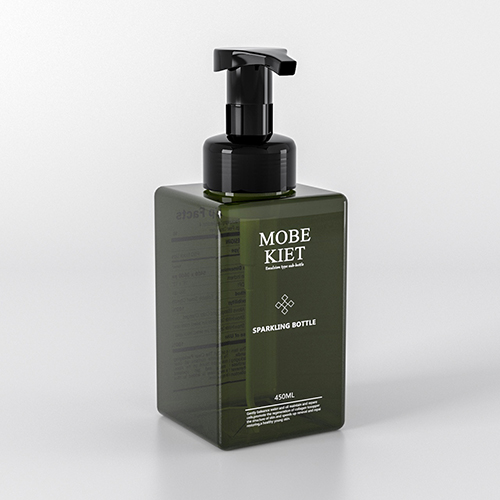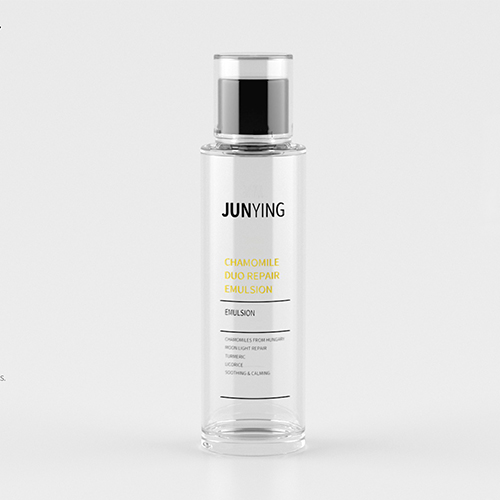
Generally speaking, cosmetic packaging mainly has three functions of protection, publicity and labeling, but if divided from the perspective of effect, it can have two functional dimensions of beauty and practicality. Aesthetics, as the name suggests, is to convey brand awareness to consumers and stimulate the latter to produce consumption impulse through the colorful packaging effect and excellent design. Try to ask, which girl’s hand did not leave a few particularly good-looking cosmetics packaging? Whether it’s for reuse, or because you really like packaging. Good packaging is just as attractive as a good face, and can affect consumer choices. YSL round tube design, for a time because of the level of appearance caused consumption chase after, as to whether the product is easy to use that is another topic entirely.
Nowadays, however, “spelling out the level of appearance” is no longer the only direction for cosmetic packaging. With the help of various “black technologies”, the practicability of packaging is shining brightly in a new field. It is well known that cosmetics have a strict shelf life, and the best shelf life after opening is shorter than the shelf life. Once the seal is opened, the cosmetic ingredients will react with the air, which will gradually affect the efficacy of the product. For example, the SK-II, known as Shenshui, has a shelf life of three years, while the shelf life after opening is only six months. To maximize the usefulness of active ingredients, cosmetics companies and service providers are looking for ways to do so. For example, one of the selling points of a domestic brand is the vacuum pump bottle. This bottle can effectively block the air flow, reduce the oxidation rate to avoid secondary pollution, and prolong the best life of cosmetics.
What is worth mentioning is the application of environmental protection concept in cosmetics industry in recent two years. Classified by materials, cosmetic packaging mainly includes plastic, glass, paper and metal packaging, etc. Among them, plastic and glass are more widely used, followed by paper packaging used as secondary packaging. In plastic packaging, plastic packaging bottle dosage is larger. However, with the deepening of the concept of green and healthy production and operation, the introduction of relevant policies and consumers’ pursuit of the concept of environmental protection, cosmetics companies are actively responding to the market’s new demand for environmental protection packaging materials.
On June 25, the cosmetics giant L ‘Oreal group announced the launch of the L ‘Oreal for the Future project, highlighting that by 2030, its product packaging plastics will be 100% sourced from recycled or bio-based materials. Recently, it has also been revealed that the paper-based cosmetic tube packaging developed by L ‘Oreal and its cosmetics packaging supplier Albea will be put into use for the first time in its brand Lifuran spring, which adopts a sustainable packaging strategy by replacing some plastics with cardboard.
The investment of new environmental protection technology is bound to bring new challenges to cosmetics enterprises in terms of cost. It remains to be seen how, after ensuring the effectiveness of the packaging itself, environmentally friendly packaging technology can become a new selling point of products through more intensive publicity, so that consumers will pay for the premium.
Cosmetics packaging accelerated trial and error, packaging enterprises into the biggest beneficiary

Cosmetic packaging for cosmetics, it is not just icing on the cake, packaging upgrade has always been one of the main ways to create a new brand. On the one hand, the new packaging can meet the changing needs of current consumers with a lower cost, such as the Chinese style and court-style packaging that has become popular throughout China in the past year. On the other hand, packaging upgrade is a “light decision”, and the cost of trial and error is lower for enterprises.
In the newly-held Shanghai Gome and Shanghai International Luxury goods packaging exhibition, one third of the more than 200 exhibitors are new exhibitors because of creativity and professionalism, which are located in subdivided areas including containers, packaging, raw materials, design and so on. Among them, the transparency and density are similar to glass, but the PETG material is more resistant to falling than glass, which is more in line with the current logistics and transportation requirements, and is sought after by international customers. In addition, all kinds of environmentally friendly packaging materials are gradually separated from the concept of laboratory, began to market applications.
In addition, with the development of the Internet of Things, interactive packaging has also begun to test the waters in the cosmetics industry. By making it more interesting, consumers can deepen their concept cognition of the brand and strengthen their close connection with the brand. The play on cosmetics outsourcing, light decision re-meaning, cosmetics enterprises have become an important driver to promote the progress of the packaging industry. From the annual report disclosed by some cosmetics companies, we can see that packaging procurement can be divided into two ways, one is direct procurement; The other focuses on competitive procurement to achieve joint improvement with strategic suppliers in innovation and key packaging areas.
Therefore, behind the growth of the packaging industry, the high growth of the cosmetics industry has contributed a lot, and has become one of the most important revenue channels for the former. Take Jinsheng New Material, which recently submitted its listing prospectus, as an example. The company’s main products are cosmetic containers, mainly cream bottles and emulsion bottles. In the recent three years, the proportion of sales revenue in the main business fluctuates by 90%. From 2017 to 2019, the sales revenue of the top five customers of Jinsheng New Material accounted for 49.58%, 47.99% and 52.58% of the current operating revenue respectively, showing a high degree of customer concentration.
In fact, since 2018, packaging companies have been paying increasing attention to the cosmetics industry, placing the cosmetics industry in a priority position in their strategic planning. In June 2018, Zhongshan Zhongrong said in its prospectus that it would focus its resources on expanding its market share in the cosmetics industry and divide kunshan factory into a factory focusing on cosmetics packaging.
According to a report released by Marketsand Markets in the first half of the year, the development of the global cosmetics industry has driven the rapid growth of the cosmetics packaging industry, and it is expected that the skincare segment industry will become the largest packaging segment market, and paper packaging will become the fastest growing segment.
Behind the trillion-level market, we are looking for the dark horse of cosmetics packaging industry.
Various factors stimulate, many cosmetics packaging enterprises began to sprint IPO. Since June 2019, Zhongrong Co., LTD., Japanese chemical OEM/ODM and plastic packaging supplier Jiaheng Jahwa, cosmetic plastic packaging container supplier Jinsheng New Materials and Shanghai Alu Packaging Co., LTD., which mainly focus on printing paper packaging of FMCG, have launched a sprint to go public.
However, the current situation of the cosmetics packaging industry is that the company is generally small in scale, with limited technical level and production scale, and most of the production capacity and delivery capacity and product quality are relatively low. Especially in the design and technical level, the homogenized competition of small-scale enterprises generally exists, and there is no enterprise with absolute advantage. It is difficult for pure OEM manufacturing enterprises to establish competitive advantages. With the change of consumption preferences and the accelerated development of the industry, cosmetics enterprises will have higher and higher requirements on the technological and technological innovation ability of packaging industry.
In the long run, the market potential of cosmetic packaging industry is worth expecting. According to the Annual Report on The Operation of China’s Packaging Industry 2019, the market size of China’s packaging industry in 2019 was 1003.253 billion yuan, with a year-on-year growth of 1.06%. Kearney, the management consultancy, predicts that the Chinese packaging market will exceed $190bn by 2020 and continue to grow at about 5 per cent, higher than the global market as a whole. The packaging industry as a whole has improved, providing a more stable development foundation for the downstream industry. In the downstream industries of packaging industry, 3C household appliances, food and beverage, and daily chemical consumer goods have always occupied the mainstream, among which the demand of cosmetics and big health industry is in a period of rapid growth.
According to data released by the National Bureau of Statistics, the total retail sales of consumer goods in 2019 increased by 8.0% year on year, among which the cosmetics category increased by 12.6% year on year (retail sales of unit consumer goods above quota), playing an obvious driving role. Euromonitor predicts that the market size of Chinese cosmetics industry is expected to reach 621.1 billion yuan in 2023. The high growth of the cosmetics industry has also attracted many companies to try to cross the boundary, such as Mayinglong, Zhou Hei Duck, Goubuli steamed stuffed bun and so on. Cosmetics industry to enter a hundred flowers bloom, the demand for the upstream packaging market is bound to continue to increase. In recent years, the gradual rise of local popular logo and domestic brands will also be linked to the upstream and downstream enterprises collision a new spark.
Post time: Dec-14-2020









